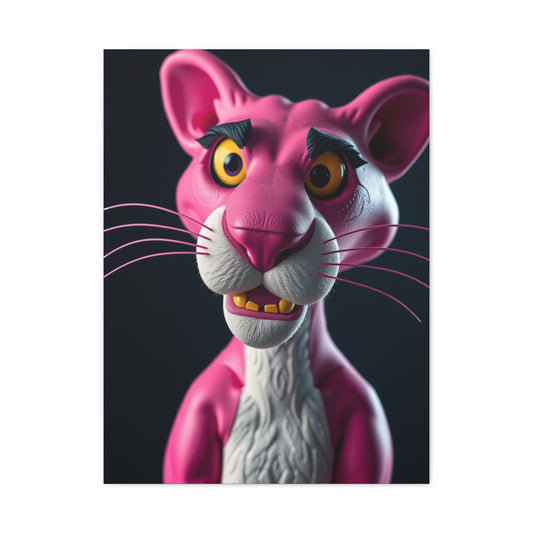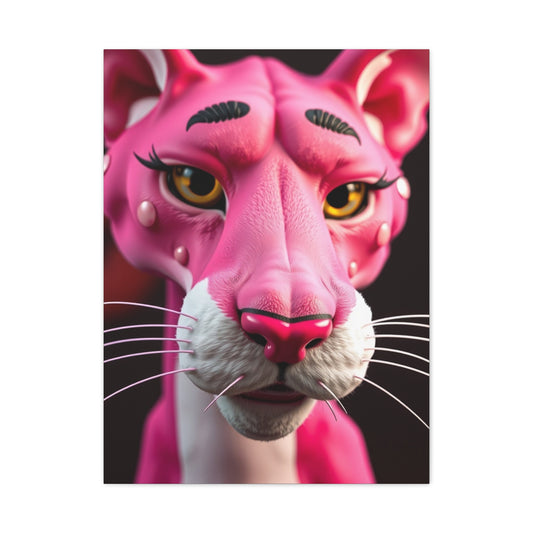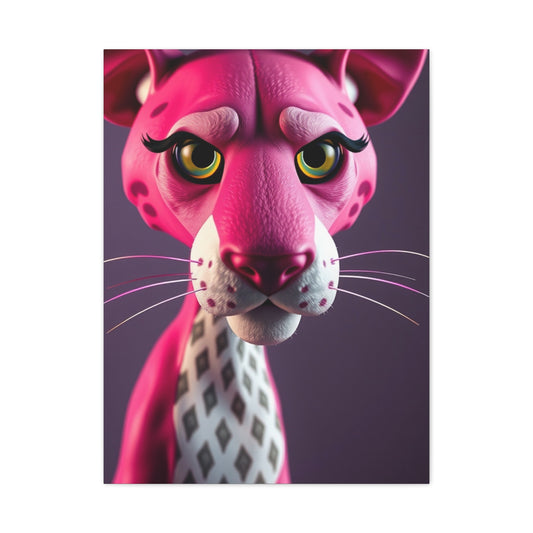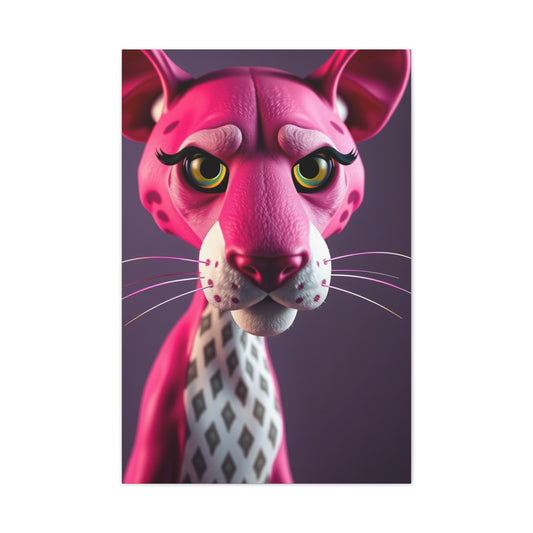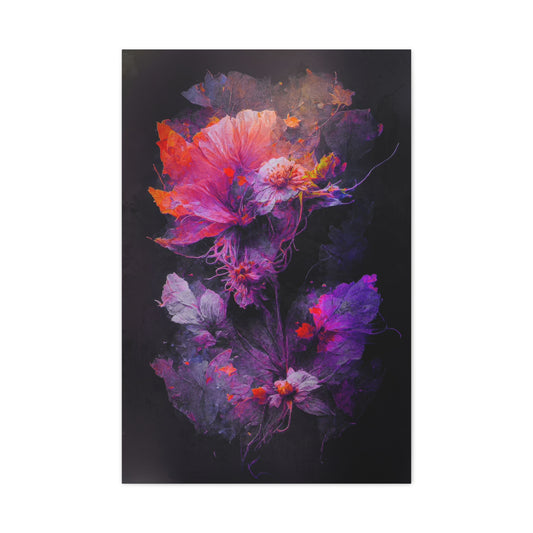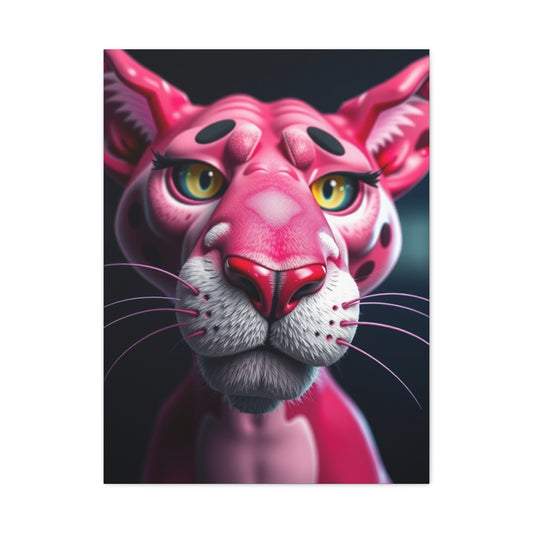In an age when digital excess oversaturates the senses, wood printing emerges like a deep breath in a concrete world—a return to authenticity that is tactile, textured, and emotionally resonant. Far beyond being a decorative fad, the practice of infusing images onto natural wood signifies a deliberate artistic rebellion, where precision technology courts the raw beauty of nature. Every grain, every groove in a wooden surface offers a whisper of the forest it came from, and when visual art meets such an organic foundation, the results are nothing short of enchanting.
Unlike synthetic substrates that appear sterile or uniform, wood possesses an innate individuality. Each plank is singular, echoing a narrative embedded over decades, even centuries. To print on such a surface is to collaborate with nature rather than overwrite it. This symbiotic relationship transforms ordinary imagery into transcendent storytelling—imbuing the mundane with a mystique no canvas prints or glossy paper reproductions can emulate.
The Soul of the Substrate
To understand why wood printing resonates so powerfully, one must first appreciate the medium’s inherent voice. Wood is not neutral—it’s emotive. Birch whispers subtlety with its soft lines, while walnut sings with dramatic undertones of darkness and depth. The idea of using these textured canvases for imagery transforms the surface into a co-author of the artwork.
When applied to wallart, this lends an intimacy rarely achieved through conventional materials. A serene landscape printed onto maple does not merely depict tranquility—it exudes it. The very texture of the wood reinforces the mood, amplifying every visual cue with tangible grounding. This kind of artwork doesn’t just hang; it inhabits a space.
Moreover, as sustainability becomes a cultural imperative rather than an aesthetic afterthought, wood offers not just warmth, but integrity. Sourcing from renewable forests or using reclaimed timber weaves ethical craftsmanship into the final output. And here lies a crucial truth: the message matters, but so does the medium.
A Harmonious Collision of Craft and Code
While the use of wood in art spans millennia, the tools of today are cutting-edge. Ultra-violet (UV) printing has revolutionized how we interact with natural surfaces. This method uses light to immediately cure inks as they are applied, bonding them not atop the material but into its very structure. Unlike traditional methods that sit on a glossy surface or demand chemical laminates, UV printing on wood preserves the surface’s vitality while infusing it with detail-rich, high-resolution imagery.
This alchemical blend of organic and digital opens doors to incredible precision. Fine facial contours, intricate mandalas, surreal abstracts—nothing is too nuanced for this technique. And more importantly, the wood’s surface elevates the result rather than diminishing it. The interplay between deep-grained shadow and inked detail creates a visual rhythm, compelling the observer to linger longer, look deeper.
This is particularly transformative for photo tile compositions. When images are split across several wooden segments, they collectively become a modular story told through both geometry and grain. No two assemblies are alike, allowing users to customize not just what’s on the wall, but how it behaves with the surrounding space.
Emotional Alchemy in Decor
At the heart of every great piece of art lies emotion—those intangible vibrations that stir the memory or ignite the imagination. Wood, unlike any other material, brings with it a primordial emotional weight. It recalls the scent of fresh sawdust, the creak of a childhood cabin floor, the warmth of a family heirloom. When printed imagery meets this material, the emotional quotient doesn’t double—it multiplies.
This is why wood printing has surged in popularity as a gift medium. A photograph of a wedding dance printed on wood becomes more than a reminder—it becomes a relic. Baby portraits on pine take on the qualities of keepsakes passed from one generation to the next. Even urban art or street photography, typically displayed on metal or acrylic, assumes a grounded, raw new life when etched onto timber.
When used in wallpics installations, this emotional resonance is amplified. Each piece becomes a pixel of a larger memoryscape, assembled like a jigsaw puzzle of recollections and dreams. The wood doesn’t just hold the image—it becomes part of the memory itself.
Beyond the Frame: Reimagining Application
Though wall displays dominate wood printing discourse, the material’s versatility is its secret weapon. In commercial environments, printed wood signage offers a departure from generic branding. Coffee shops, yoga studios, and artisan boutiques are increasingly turning toward this medium to reflect authenticity and heritage.
Even professional settings benefit. Conference rooms with wood-mounted vision statements, wood-printed investor plaques, or mission statements printed on reclaimed teak elevate corporate aesthetics from sterile to soulful. There’s something about a company that chooses wood over plastic that signals intention, discernment, and taste.
Likewise, event décor has been revitalized by wood printing’s adaptability. Rustic weddings, boho birthday celebrations, even moody art installations now feature wood-based visual elements—from directional signs to commemorative displays. It’s not just about decoration; it’s about setting a tone.
And let's not forget that wood can be shaped. Circular plaques, driftwood slats, hexagonal tiles—all become canvases for creativity. Printing isn’t limited to rectangular constraints; it thrives in playful formats, each with distinct appeal. Paired with the right imagery, they elevate simple visuals into multi-sensory experiences.
A Tactile Symphony of Imperfections
One of the most beguiling aspects of printing on wood is its embrace of imperfection. Where high-gloss finishes aim for flawlessness, wood celebrates the unpredictable. A slight warp, a knotted swirl beneath a subject’s smile, a variation in grain tone beneath a blue sky—all contribute to the piece’s charm.
For artists and photographers, this means releasing control—and finding freedom in doing so. The medium reminds us that art does not have to be precise to be profound. Some of the most compelling pieces derive their power not from polish but from rawness. This makes wood an ideal choice for experimental compositions or emotionally charged portraiture.
Even abstract art benefits. An acrylic splash or cosmic burst gains unexpected nuance when overlaid on textured oak. The material not only reframes the content—it co-authors it. Artists no longer print onto wood—they print with it.
Mindful Maintenance for Lasting Beauty
Though robust, wood does have sensitivities. Proper placement away from direct sunlight and damp spaces is essential to preserving image vibrancy and structural integrity. Gentle cleaning with microfiber cloths, perhaps an occasional polish with oil-free conditioners, can maintain its character while preventing unnecessary wear.
Interestingly, many collectors actually prefer the gentle aging of wood over time. Exposure to air and ambient light gradually shifts the color tone, adding a vintage softness to the image. Rather than diminish its impact, this aging process enhances its emotional gravitas.With proper care, a wood print doesn’t just last—it evolves. It matures like leather, like wine. Its very transformation becomes part of its allure.
How Wood Printing Transforms Spaces
In a world increasingly dominated by ephemeral design and disposable decor, wood printing introduces an audacious blend of permanence and poetry. It is the language of warmth made visible, a medium that doesn’t just fill a wall but imbues a space with memory, texture, and quiet power. As visual culture gravitates toward tactile authenticity and curated personal aesthetics, the resurgence of wood as a visual storytelling platform is no accident. It is, in fact, the new frontier of interior narrative.
From minimalist apartments to bespoke commercial interiors, the application of wood-printed wall art has transcended its rustic origins. No longer reserved for cabin-style motifs or homespun galleries, today’s wood prints nestle seamlessly into modern, industrial, and even avant-garde design ecosystems. They offer an ineffable balance—evocative yet understated, raw yet refined. This phenomenon marks a significant shift in how design, culture, and materials intersect to create emotionally resonant spaces.
Interior Alchemy: Where Wood Prints Change Atmospheres
Designing with wood-printed art is not merely about image selection; it’s about spatial choreography. Unlike flat-surfaced canvas prints or mass-market photo paper, wood infuses dimensionality into décor. It becomes part of the architecture, like exposed brick or aged steel beams. A landscape printed on birch not only becomes a focal point but anchors the emotional tone of a room.
Consider a monochrome photograph etched onto a lightly grained panel. In a room filled with matte blacks, concrete, and metal, the wood introduces softness—a counterbalance that calms the starkness without compromising the minimalist ethos. In contrast, printing vibrant abstract forms on richly toned walnut can electrify a neutral environment, acting as a visual crescendo amid silence.
It’s not just what you display—it’s what the material communicates. Wood does not whisper in sterile tones; it murmurs with depth. Its tonal undertones subtly respond to ambient light, shifting throughout the day and turning static images into living murals. Designers who understand this dynamic treat wood prints less as art pieces and more as visual mood boards, constantly in flux. The experience becomes cyclical, encouraging engagement and interaction in ways that flat surfaces never could.
Wood, in its organic variety, speaks the language of nature—of growth, of change, of cycles. This inherent flexibility is what makes it such a compelling medium for interior design, offering an ever-evolving experience within static spaces. As the light changes, the grain of the wood reacts, creating an immersive atmosphere where the room itself feels alive.
Architectural Harmony: Integrating Wood into the Structure
Beyond wall-mounting, wood-printed visuals are increasingly being embedded into architecture itself. Custom-designed panels featuring imagery or typography can be integrated into headboards, stairwell facings, bar fronts, or accent walls. This level of integration elevates wood printing from an accessory to an element of design anatomy.
In commercial spaces—think boutique hotels, co-working studios, or luxury cafes—these prints don’t just decorate; they articulate brand philosophy. A boutique hotel might use photo tile installations across different types of wood to reflect the theme of each suite, while a yoga studio may install serene motifs on pine slats to promote harmony. When imagery is chosen with intention, and material is matched to function, the result is a seamless fusion of form and ethos. These wood prints serve as subtle but powerful metaphors for the values of the spaces they occupy.
Some designers take the idea of embedding wood further by layering materials to add depth and texture. Overlaying translucent prints on stacked wood panels creates a 3D relief effect, ideal for entryways or exhibition backdrops. These designs shift perception based on the viewer’s angle, adding kinetic energy to otherwise static imagery. The dynamic interaction between light, texture, and form offers an ongoing visual dialogue between art and architecture.
Sculpting Memory: Personalized Decor That Resonates
There’s a growing craving in today’s design world for items that reflect personal histories. The trend is moving away from impersonal, mass-produced decor toward soulful, story-infused interiors. And in this arena, custom wood printing reigns supreme.
Take the simple idea of printing childhood photographs on slices of reclaimed cedar. These aren’t just nostalgic keepsakes—they’re totems of lineage. When arranged in a mosaic or hung as standalone pieces across a hallway, they become an organic family tree etched not in ink but in timber. The wood’s age and patina complement the imagery, making it feel timeless. The tactile nature of wood turns each photograph into something more than just an image; it becomes a physical part of family history, a permanent reminder of the past.
Similarly, wedding photos printed on shaped wood—such as hearts or irregularly cut slabs—resonate far beyond their visual appeal. They transform digital memories into tactile heirlooms. These are not mere canvas prints to be swapped out with changing trends; they are fixtures of sentiment, destined to endure. The unique grain patterns of the wood subtly underscore the emotional weight of the event, grounding the images in something real, something permanent.
Photo tile clusters bring further possibility. Whether as triptychs or nine-panel mosaics, when each image is rendered on a distinct wood type—maple, ash, acacia—their juxtaposition creates visual tension and balance, like a visual symphony of memories. Here, woodprints shine. Used sparingly and with intent, these become poetic constellations of personal moments, curated with care. Every individual piece tells its own story, yet the arrangement forms a larger, cohesive narrative—just like the story of a family or a lifetime.
Retail Renaissance: A New Canvas for Commercial Identity
Brick-and-mortar retail has faced relentless disruption, yet physical spaces still matter. In fact, the stores and studios that endure do so not through ubiquity but through ambiance. Wood-printed elements offer a rare chance for retail brands to articulate identity with depth and soul.
Take the example of artisan coffee shops—spaces that thrive on mood as much as product. Rather than sterile menu boards, many are turning to wood-printed versions, blending hand-lettered typefaces with illustrative accents on thick-grain slabs. The natural texture reinforces artisanal values and makes even simple transactions feel intentional. In these environments, the art of wood printing becomes part of the immersive customer experience, where the decor speaks to the brand’s philosophy of quality, craftsmanship, and authenticity.
Boutique clothing stores and maker studios are experimenting with wood branding—literally. Logos, artist bios, and even price tags are being printed onto wood slices, planks, or cubes. It turns the transactional into the tactile, the promotional into the poetic. One studio, for instance, prints product descriptions onto circular wood tags that customers can take home—objects so beautifully designed they outlive the purchase itself. These functional works of art offer a lasting connection to the brand and elevate the customer's interaction with the space.
The corporate world has taken note. Tech startups and wellness brands are turning their mission statements into decorative wall art, printed on wide oak panels and displayed like sacred texts. It’s storytelling, not signage. These companies are not merely selling products or services; they are offering a narrative, an experience that is anchored in the authenticity and sustainability of the materials they choose.
Gallery-Grade Gravitas: How Artists Are Embracing the Medium
Perhaps the most electrifying shift in the wood printing world is the growing adoption by contemporary artists. While once relegated to the realm of craft fairs or folk art, wood has now entered white-cube galleries and international exhibitions, thanks to how it enhances complexity, texture, and meaning.
Artists are using wood not just as a surface but as an active participant in the conceptual process. A photographer capturing abandoned urban ruins may choose barn wood for its weathered scars, thereby extending the photograph’s theme through substrate. A digital artist exploring themes of ecological collapse might use salvaged driftwood to underscore the transience of nature. These aren’t just prints on wood; they are dialogues between medium and message.
Even typographic and calligraphic work finds new vitality when rendered on wood. The shadows cast by engraved or layered lettering create a dimensional poetry that paper cannot replicate. The ink doesn’t just sit—it seeps, it melds, it echoes. The texture of the wood imparts a unique resonance to each piece, transforming it into a living artwork.
This tactile interplay has given rise to hybrid practices where printing, carving, burning, and painting intersect. A single piece might begin with a UV print, receive hand-painted accents, and finish with engraved lines. The end result is not mass-manufactured—it’s a singular experience.
In this milieu, wood prints are evolving too. Instead of predictable grids, artists are experimenting with modular arrangements that reflect constellations, rhythms, or geographic maps. Each piece—while cohesive—is allowed to breathe individually, creating an ensemble as diverse and wild as the forest it once was.
Durability Meets Design Ethics
Wood printing isn’t just beautiful—it’s durable. Unlike framed paper, which buckles with humidity, or canvas prints that stretch with time, wood maintains form. When treated with the right UV-cured inks and environmental sealants, it becomes not just a work of art, but a resilient artifact. And let’s not overlook sustainability. With rising awareness around eco-conscious living, wood’s biodegradable nature and low-energy printing process stand out.
Choosing responsibly sourced timber or recycled wood makes each piece a statement—not just of taste, but of values. As consumers turn toward mindful curation, wood becomes an emblem of ethical elegance.Maintenance remains refreshingly simple. A dry microfiber cloth keeps dust at bay, and occasional exposure to indirect light allows the tones to mature gracefully. Rather than fight aging, wood embraces it. The surface softens, the hues deepen, the character grows richer. No other material honors the passage of time with such graceful dignity.
The Emotional Craft of Wood-Printed Keepsakes
In a world consumed by fleeting digital moments, where interactions are often as transient as the technology that delivers them, the quest for gifts with lasting meaning has become both a rebellion and a renaissance. Today’s gift-giving culture increasingly rejects disposable novelties in favor of items that carry weight—objects infused with nostalgia, emotion, and significance. Wood printing emerges as a remarkable medium in this transformation, redefining the concept of keepsakes by blending personal history with the enduring beauty of natural materials.
Wood-printed gifts are not simply decorative objects; they are emotional artifacts, tangible relics of memory etched into the grain of the wood itself. They speak a language of permanence and sentimentality, giving new life to memories that would otherwise fade into digital oblivion. This tactile, enduring medium allows for a deeper connection, transforming the act of giving into an intimate ritual that transcends the superficiality of mass-produced alternatives.
Personalized Legacy: Turning Moments into Milestones
Wood-printed keepsakes are deeply rooted in the realm of personalization, where each piece serves as a bridge between past and present, offering a lasting tribute to pivotal moments in life. The beauty of wood lies in its ability to capture the essence of a memory while adding its own narrative through the unique texture and grain of the material. Whether it’s a cherished photograph, a handwritten note, or a significant milestone, wood transforms these moments into heirlooms that can be passed down through generations.
For example, consider a wedding portrait printed on a slab of reclaimed oak. The natural imperfections of the wood, coupled with the depth of the photo, infuse the image with a sense of history that a traditional canvas print simply cannot achieve. The grain of the wood doesn’t just act as a backdrop for the image; it becomes a silent witness to the love and commitment shared in that moment, making it feel timeless.
Similarly, the soft, pale hues of birch wood provide an ideal canvas for newborn photos, turning them into more than just images—they become heirlooms that commemorate the innocence and promise of new life. These aren’t just photos to be hung on a wall and forgotten; they are cherished mementos that become part of the family’s visual and emotional history. The texture of the wood adds an organic element, making the photograph feel rooted in a deeper sense of heritage.
Celebrations with Soul: Beyond Generic Gifting
In today’s world, where birthdays, graduations, and anniversaries often seem to be marked with uninspired, mass-produced gifts, wood-printed keepsakes stand as a refreshing and meaningful alternative. These gifts don’t just commemorate the occasion; they elevate it, transforming the act of giving into a deeply personal experience.
For milestone birthdays, consider a series of images printed on wood, each representing a different chapter of the celebrant’s life. From childhood to adulthood, these images form a timeline that not only celebrates the years lived but also honors the journey. Unlike the fleeting nature of digital slideshows, this wood-printed timeline becomes a permanent fixture, one that can be revisited and reflected upon for years to come.
Graduations, too, find new depth in wood printing. A panoramic shot of a graduating class, a favorite quote, or even handwritten messages from friends can be transferred onto timber, creating a unique keepsake that goes beyond the typical diploma frame. These aren’t just photos or words—they are physical manifestations of an achievement, imbued with the warmth and character of the wood itself.
Even retirements can be honored with this elevated form of gifting. A series of wood-printed tiles, each depicting a different memory or accomplishment from the retiree’s career, serves as a testament to a life well-lived. The texture of the wood adds a sense of gravitas, turning what might have been a fleeting moment into a lasting tribute to a career full of impact and legacy.
The Romantic Renaissance: From Custom to Sacred
When it comes to romantic gifts, wood printing transforms the ephemeral nature of love into something tangible and enduring. Unlike a digital text or a temporary token, a wood-printed gift serves as a lasting reminder of affection, commitment, and shared memories.
Imagine printing a handwritten love note onto a smooth slab of walnut, transforming a simple message into a tactile artifact that can be cherished and revisited for years. The grain of the wood absorbs the ink, creating a depth and texture that can’t be replicated on paper. This isn’t just a piece of art—it’s a living, breathing representation of love that evolves with time.
For engagements, weddings, or anniversaries, wood printing offers an opportunity to immortalize significant moments in a way that feels profoundly intimate. A proposal photograph, for example, could be printed on a piece of cherrywood, with the natural grain of the wood echoing the raw, unfiltered emotion of the moment. The resulting piece becomes more than just a picture—it becomes a tactile embodiment of a life-changing event.
Holiday Magic: A Tactile Tradition
Wood-printed keepsakes also breathe new life into holiday traditions, infusing them with meaning that transcends the consumer-driven, commercialized aspects of the season. In an era where holiday shopping has become synonymous with fast-paced consumerism, wood printing returns the focus to the meaningful and the personal.
Imagine custom ornaments made from thin slices of birch, each printed with family photos or hand-drawn illustrations. These aren’t just holiday decorations—they are keepsakes, imbued with the warmth and memories of past seasons. Hung from a tree or displayed on a mantle, these ornaments become part of the holiday ritual, passed down through generations as symbols of family history.
For festive table settings, wood-printed name cards or menu plaques lend a rustic elegance to any gathering. Unlike disposable paper or plastic alternatives, these wooden pieces can be kept long after the meal is over, serving as mementos of shared meals and cherished moments. The natural texture of the wood adds a warmth and depth that is often missing from mass-produced holiday decor.
Spiritual Offerings: Meaning Beyond Material
In addition to the personal and festive aspects of wood printing, this medium also lends itself beautifully to spiritual and ceremonial gifts. There is something profoundly grounding about receiving a gift printed on wood—its tactile nature evokes a sense of reverence, making it an ideal choice for gifts that are meant to honor faith, spirituality, and deep emotional connections.
For example, a baptismal blessing, printed in elegant calligraphy on a smooth piece of beechwood, becomes an artifact of faith, something that can be kept as a lifelong reminder of the sacred occasion. Similarly, a mantra or affirmation, etched into pine and given to a friend during a difficult time, becomes more than just a kind gesture—it becomes a source of solace, carrying the weight of both the message and the material.
For weddings, particularly those held in natural settings or heritage locations, wood-printed vows have become increasingly popular. The vows are etched into pieces of reclaimed wood, not just as a form of decoration but as a powerful symbol of commitment. Like love itself, the wood bends but does not break—standing as a testament to the enduring nature of the promises made on that special day.
Corporate Gifts, Reimagined with Integrity
In the corporate world, where gifting often feels like an obligatory task rather than a meaningful gesture, wood printing offers an opportunity to stand out with sincerity and authenticity. Rather than giving generic merchandise or mass-produced tokens, companies can opt for custom wood-printed gifts that reflect their values and appreciation in a more personal way.
A thank-you plaque, printed on walnut and personalized with a team photo and message, conveys a level of thoughtfulness and gratitude that is far more enduring than a standard corporate gift. Similarly, client gifts can be reimagined through the use of wood-printed visuals—whether it’s a photo tile of a shared project or a custom wooden box with a branding motif. These gifts communicate not just appreciation but also a sense of shared partnership and collaboration.
DIY Gifting: Crafting Connection by Hand
One of the most beautiful aspects of wood printing is its accessibility. With the rise of at-home UV printers and wood-burning tools, anyone can craft a personalized wood-printed gift that speaks to their unique relationship with the recipient. DIY wood gifts are deeply personal and often carry a sense of imperfection that adds to their charm and character.
Parents can work with their children to create wood art from school drawings or family photos. Couples can etch shared memories or bucket lists onto pine boards, creating interactive decor. Friends can exchange small wood-printed blocks featuring inside jokes, favorite quotes, or travel memories. These handcrafted gifts are more than just objects—they are tokens of connection, imbued with love, effort, and meaning.
In an age where mass production often overshadows personal touch, wood printing offers a return to genuine, heartfelt gifting—a tradition where the materials used and the memories shared create an enduring bond.
Elevating Interiors through Wood Printing
As the boundaries between function and art dissolve in modern interiors, aesthetic choices must carry more than just decorative weight—they must narrate, resonate, and reflect a personal or cultural ethos. In this context, wood printing has surged beyond novelty into a respected design language. Its raw tactility, married with digital accuracy, is transforming living spaces, hospitality environments, and public interiors into visual sonatas of memory, identity, and ambiance.
Wood printing, in the world of design, is a medium of emotional geometry. Unlike sterile materials, it adapts—responding to light, time, and the nuances of space. A well-placed wood-printed visual does not merely occupy a wall; it anchors the spirit of a room.
Spatial Poetry: Integrating Wood into Residential Interiors
In contemporary homes where minimalism has begun to feel cold and impersonal, wood-printed pieces breathe warmth back into blank expanses. Whether a small photo tile on a hallway niche or a sprawling multi-panel narrative above the fireplace, these artifacts become focal points—not for their scale, but for their soul.Wood grains interact harmoniously with common elements like linen drapes, terracotta floors, or stone backsplashes. In Scandinavian or Japandi-inspired interiors, a series of canvas prints on birch or ash blends seamlessly into the ambiance, offering understated drama.
For bohemian homes, rough-edged, reclaimed wood bearing travel photography adds a textured homage to wanderlust and curiosity.Bedrooms, particularly, benefit from the serenity wood art introduces. Imagine muted-toned florals or dreamlike silhouettes printed on maple panels, hung above a headboard or in sequence along a dresser. The organic textures ground the space, turning it into a sanctuary rather than a showroom.
From Lobbies to Lounges: Commercial Elegance in Print
Hospitality venues, boutique stores, and wellness centers are now leveraging the power of wood-printed visuals to deepen guest experience. Far more than décor, these pieces become immersive storytelling devices—visual metaphors for the ethos of the brand or space.Consider a small eco-hotel in the Alps, its reception wrapped with a mural of native flora, printed on lightly varnished pine. Or a coastal bistro where menus are mounted on wooden slates printed with stylized marine illustrations. These design choices don’t shout; they suggest. They imbue atmosphere not just with style, but with story.
Spas and yoga studios have discovered a profound harmony in wood prints. Mantras, chakra maps, or soft botanical imagery printed on bamboo or cedar create an almost sacred resonance. Guests feel it—not just visually, but emotionally. These are environments that heal, grounded in earth-born textures.Even corporate lobbies are shifting from sterile, glass-heavy aesthetics to mixed-media galleries featuring printed wooden panels that showcase values, milestones, or artistic collaborations. The effect? Instant credibility paired with unspoken hospitality.
Public Art and Urban Texture
Urban spaces, long dominated by concrete, steel, and glass, are now punctuated with wooden installations that reintroduce humanity into infrastructure. Public libraries, transport terminals, and city squares have begun incorporating wood-printed art to humanize and localize their identities.Printed murals made from modular wood panels—displaying community portraits, historical events, or indigenous motifs—turn passive architecture into narrative sculpture. They invite passersby to pause, interpret, and connect.
In art galleries, especially those advocating sustainability, exhibitions now include series of wood-printed works that merge digital photography with tactile authenticity. This fusion allows viewers to experience art not just as image, but as surface and scent—an intimacy rarely found in metal or paper formats.
Architectural Innovation: Beyond Framing
Architects and interior designers are now integrating wood printing within structural design rather than as an afterthought. Stair risers printed with abstract textures, cabinet fronts bearing vintage cartography, even ceiling panels depicting skyscapes—all these possibilities show how the medium expands not just décor but architecture itself.
Bathrooms are featuring waterproof, UV-printed wooden panels etched with subtle designs or calming imagery, proving that even utilitarian spaces benefit from visual grace. Kitchens use printed wood as backsplash art or open-shelf storytelling—be it family recipes, botanical studies, or city maps.Custom wallpapers—yes, wallpapers—are being reimagined with interlocking wooden tiles printed with gradient visuals. These act as 3D mosaics, introducing both motion and emotion to flat surfaces.
Sustainability and Sensibility
In a world craving ethical beauty, wood printing answers two calls: aesthetic integrity and environmental consciousness. Unlike synthetic media, responsibly sourced wood offers biodegradability and renewability. Paired with modern UV-curable inks that minimize chemical runoff and energy use, this process exemplifies how art and ecology can align.
Designers are increasingly choosing this medium not for trendiness, but for its rootedness. It signals care—not only for form, but for footprint. A printed wooden statement piece becomes both visual anchor and philosophical emblem.Wallpics emerges in this arena as a subtle ally. Its carefully selected wooden formats emphasize clarity without compromising warmth. Used no more than thrice within a space, wallpics' offerings avoid oversaturation and instead act as narrative punctuations—words of emphasis in the poem of place.
Emotional Design: Rooms That Remember
Wood printing brings emotional resonance to design. A child’s sketch etched into softwood and displayed in a reading nook; a family’s ancestral tree visualized on concentric wooden circles; travel polaroids printed on square wood blocks and arranged in an ever-growing timeline—these are not just design choices. They are memory manifest.
When walls are no longer passive but participatory—when they listen and speak in grain and ink—the concept of wallart evolves. It becomes alive, immediate, and indelible.
Conclusion: The Eternal Embrace of Nature and Innovation
In tracing the arc of wood printing—from its technological roots to its artistic blossoms—it becomes clear that this medium is not merely a passing novelty. It is a testament to the evolving marriage between nature’s unruly grace and humanity’s quest for expression. The grain of a tree, once only seen as a backdrop, now becomes the very heartbeat of art.
Through photo tiles etched with memory, wallart laced with authenticity, and canvas prints given a natural skin, wood printing redefines what it means to decorate, commemorate, and connect. It infuses our spaces with layered meanings—each knot, ring, and texture echoing a story that pixels alone could never carry.At its core, this art form is about preservation: of feeling, of form, of earth. When you gift or hang a printed wooden piece, you are not just placing an image—you are anchoring a presence. You are allowing nature and technology to co-create something sacred.
In an era oversaturated with fleeting impressions, wood printing invites us to pause—to touch, to remember, and to belong. Let the beauty of timber and ink remind us that art, when grounded in the natural, becomes not just a visual— but a visceral—part of life.










